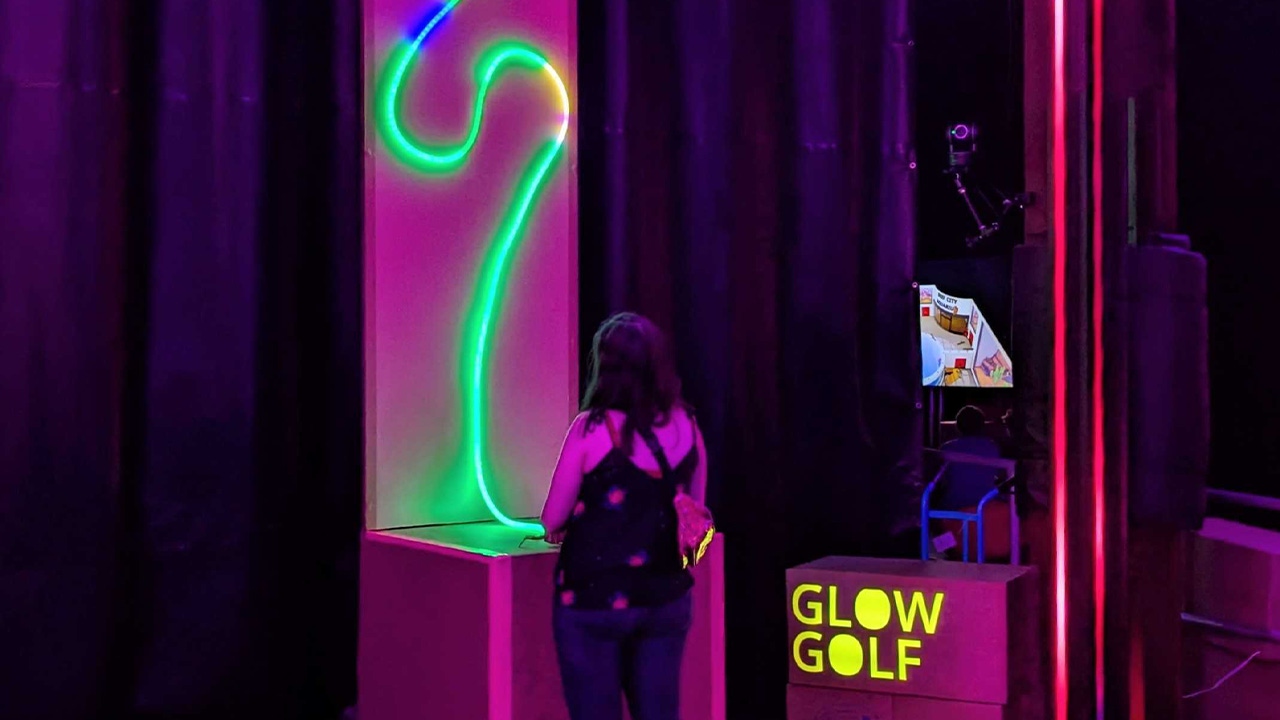Trending
Opinion: How will Project 2025 impact game developers?
The Heritage Foundation's manifesto for the possible next administration could do great harm to many, including large portions of the game development community.
'Why are we building 100 hour experiences for gamers when there are still a billion people who've never had a 100 second experience?'

"Why are we building 100 hour experiences for gamers when there are still a billion people who've never had a 100 second experience?" asks Alex Johansson, kicking off his Hyper Talk at AMAZE Sheffield.
Johansson is an award-winning experimental designer, educator, and game maker who builds LED play experiences for marginalized groups. He's the creator of Glow Golf, a minimalist, approachable, sports game that asks players to complete randomly generated golf courses (laid out along an LED strip) using a bespoke controller. The title is being tested in care homes and special needs centers to explore how video games can become more accessible by defying convention.
Untangling how to create experiences for new audiences that don't fit the narrow definition of 'gamer' is something Johansson has been grappling with for some time. "A real through line of my career has been engaging with new people in public spaces, and the thing that has really stuck with me is giving people their first experiences in games," he says. "There's nothing else that comes close. I love it."
Johansson recently decided that 'gamers' will no longer be his primary audience moving forward. They're more than welcome to enjoy his work, but he's "given them 10 years, and that's enough."
"So, why pursue new audiences? There are two key points: expectations are far lower than in this bloody industry. We're currently choking to death—and we have to drop the standards. An easy way to do that is to disregard this [more conventional] audience and consider new ones. The other half of it, which I care far more about, is you can really challenge what you consider to be intuitive," he says.
Johansson suggests unshackling from convention means ditching interfaces and controllers that have become "inherently hostile." For instance, he suggests most controllers and gamepads are stagnant and oppressive, preventing those who aren't familiar with those widespread inputs from entering the digital playground. To change the narrative, he feels designers should be actively conversing with new audiences to understand what interfaces work for them.
Drilling that point home, Johansson shows an image of a racing game he designed with an elderly woman who'd never played a video game before. After workshopping control schemes together, they landed on the idea of dragging a coin between two contact points—a movement reminiscent of how you'd remove the foil from a scratch card. It might seem like an offbeat pitch, but Johansson says it worked because the interface "resonates" with her.

Glow Golf incorporates a bespoke 'putter' controller
"The real lightbulb moment for me was the idea that if you can surface those inputs from those audiences, you can potentially build inputs that resonate with that demographic. Then you've just unlocked how that population can engage with games," he continues.
"As part of that, [you might ask the question] why should we consider the elderly? This is something I deeply care about. As an industry, we've generally disregarded the elderly—either ignored them or demonized them—in our pursuit for engaging the young. That's just not the case anymore. Game developers are dying of old age. In 20 years people that grew up with arcades will be in their 80s or 90s—or dead. So we have to engage these audiences."
Challenging any doubters, Johansson says an elderly couple aged 96 and 85 won a Wii Bowling tournament in France just last year (thanks Eurogamer). For him, it's a fact that shows the industry needs to start committing to creating experiences that cater to marginalized, overlooked, and underserved audiences.
He accepts it's a pivot that won't guarantee success, but with the industry in dire straits, why not take a punt? "I've been making games for 10 years and it's just about sustainable at this point for me—with help. But the truth is, games right now—as I'm sure a lot of you appreciate—is barely commercially sustainable. If that's the case you might as well take a chance on someone new," he continues.
"In terms of where to start: both with alternative controller [games] and with approaching design is to keep the scope really small. More than anything else, just ditch the keyboard. Keyboard, mouse, and gamepad are just outdated inputs. If you can do it at an exhibition, that's a perfect format for it."
Ultimately, Johansson says the most critical question designers should be asking themselves is this: "how can you reach one new person who's never experienced games before?" If you can figure that out, there's a good chance you're on the right path.
You May Also Like